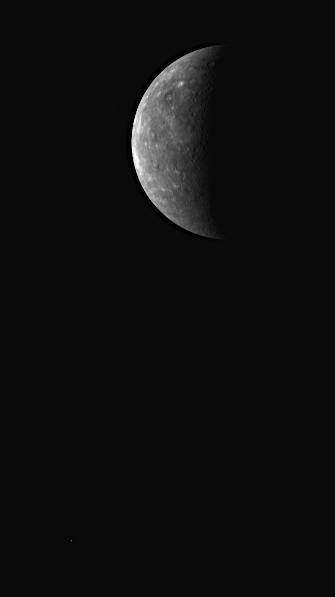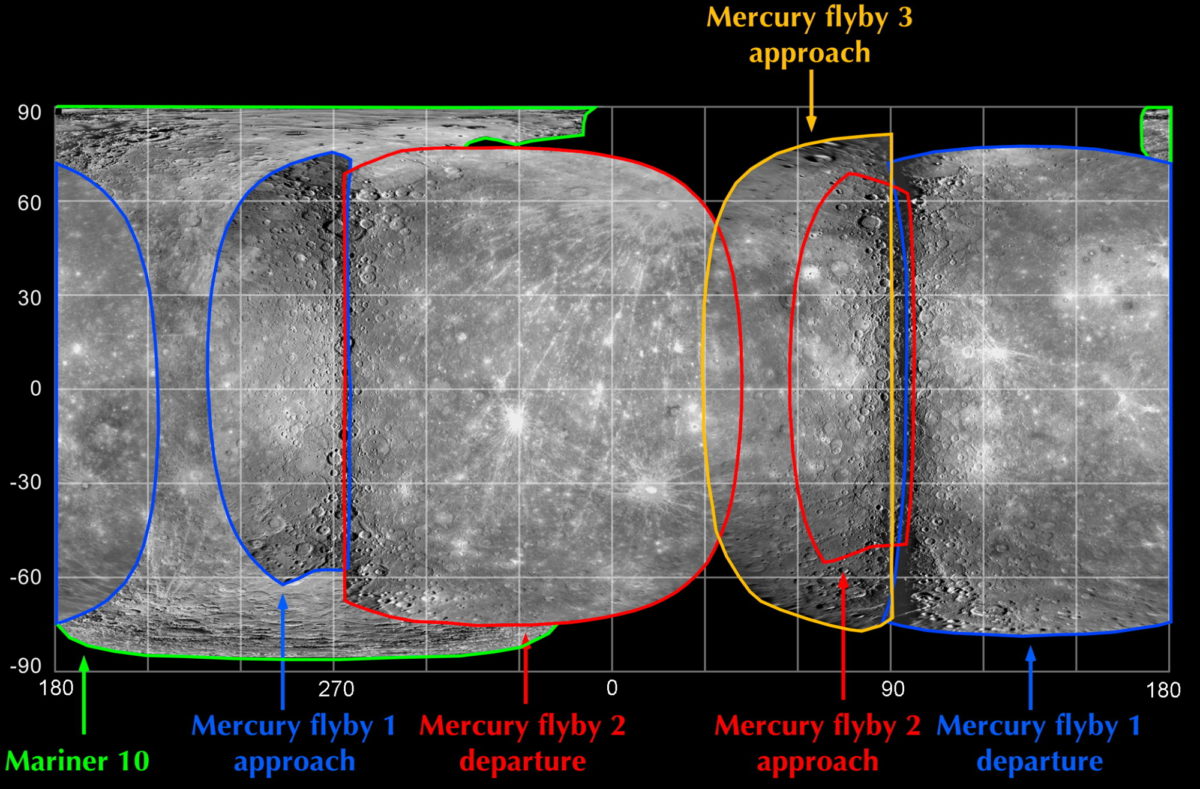Emily Lakdawalla • Oct 02, 2009
MESSENGER gets two planets for the price of one
Here's a pretty shot of Mercury taken by MESSENGER on approach. I've posted such approach images already, though, making this one relatively non-newsworthy...but wait, what's that tiny little speck in the lower left corner of the photo?

Why, it's Venus! The solar system is really a very empty place, so it's quite remarkable that MESSENGER just happened to catch two planets in one camera frame. But it really is Venus; you can tell from this simulated view from JPL's Solar System Simulator. Yeah, Venus is only a tiny speck. I still think the photo is awfully cool.
That image is cropped from this one that they released today, which nicely demonstrates the difference in the views you get through MESSENGER's wide- and narrow-angle cameras. It's the norm for spacecraft to carry at least two different camera instruments. Typically there's one wide-angle camera, which can take in a large amount of the sky (or a planet) in one view at relatively low resolution, and one narrow-angle camera, which can capture much higher-resolution pictures but at a cost of seeing much less in each field of view. MESSENGER's wide-angle camera has a 10.5-degree field of view, while its narrow-angle camera has a 1.5-degree field of view. So the narrow-angle camera has seven times higher resolution, but it would take 49 narrow-angle camera images to cover the area that you can see in one wide-angle camera shot.

The MESSENGER team has released several images per day from the flyby; check out their gallery to see them all. Here's my favorite among the recent ones. There's something about those double-ring basins that I find visually compelling. This one still needs a name.

This map shows you that despite the safing event, MESSENGER completed one very important goal for this flyby: it filled the last big gap in imaging coverage, a north-to-south stripe of the planet around 50 degrees longitude. Having that gap filled will be very helpful to the team as they plan for the orbital phase of their mission.

Support our core enterprises
Your support powers our mission to explore worlds, find life, and defend Earth. You make all the difference when you make a gift. Give today!
Donate

 Explore Worlds
Explore Worlds Find Life
Find Life Defend Earth
Defend Earth

